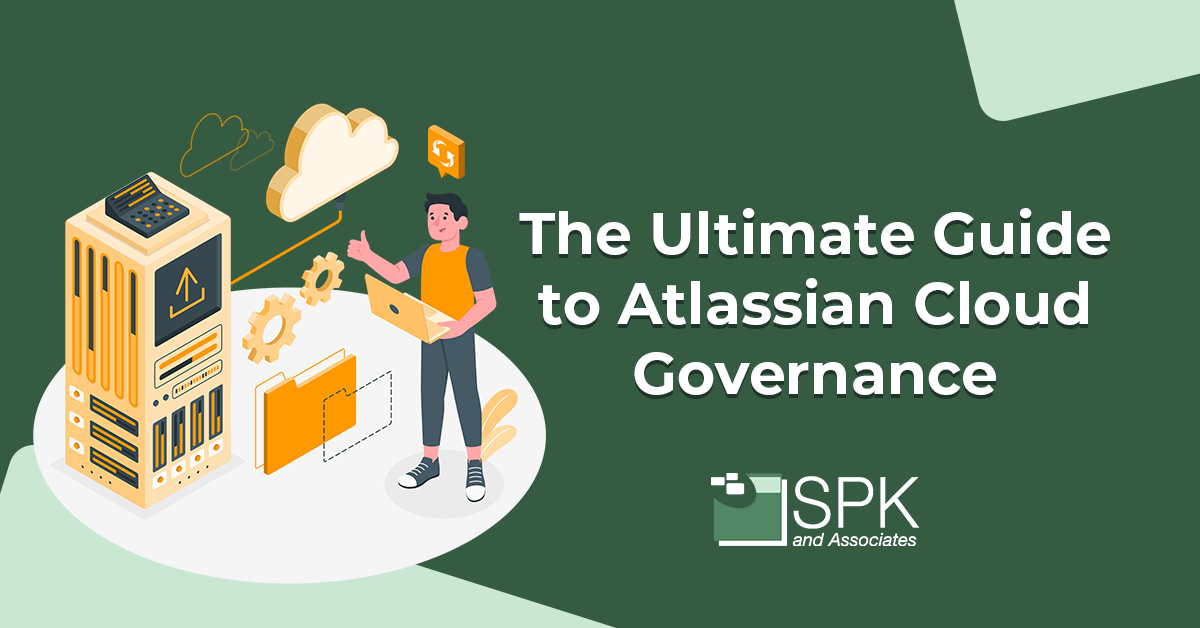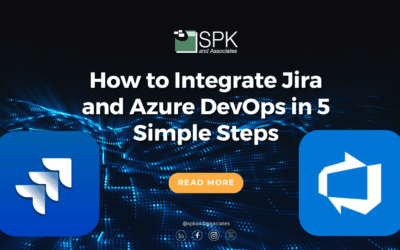Atlassian’s suite of tools provides incredible capabilities, making it easy to understand why so many organizations utilize them. However, simply using these tools does not equate to maximum efficiency achievement. By establishing a scalable governance model, Atlassian users can achieve enterprise growth for their business. Let’s explore how to implement this model.

Goals of a Scalable Atlassian Governance Model
Atlassian governance includes all the strategies an organization employs to manage the use of Atlassian tools such as Jira, Confluence, etc. It ensures tools are used effectively and securely to achieve organizational goals. A strong governance model has layers of standardized procedures that allow companies to scale without missing risks. Implementing a governance model allows your business to have a clear direction, maintain legal obligations and compliance needs, eliminate risks, and ensure the business is performing well overall.

There are two main goals of an Atlassian governance model, scalable growth and transparent control. Scalability is key to maintaining competitiveness. When your company grows, more users join and your products must be able to handle this growth. On the other hand, transparency enables knowledge. Transparent control allows users to expose metrics across the Atlassian suite and their organization.
How to Establish Scalability for Enterprise Growth with Atlassian
Scalability is critical for businesses to remain competitive in their respective markets. The best way to accommodate rapid scalability is by following a standardized model. Many companies started using Atlassian with one product such as Jira, but now most Atlassian customers utilize multiple products. Having a governance structure to manage them makes workflows more efficient. This structure can help review the IT ecosystem, standardize processes, and clean up infrastructure. Furthermore, governance models should be documented for users to understand policies and operating procedures.
These documents should thoroughly detail configuration, change, and access management. Configuration management includes things like date formats, order of comments, and linked issue display. Change management includes when and where changes will be documented, the roles and responsibilities of changes, and policy changes. Access management encompasses managing users, roles, permissions, and groups. Documenting all of these enables growth for your business by ensuring integration across teams.

Implementing a Governance Board
Due to the intricacy of configuration deployment, it is good practice to have a governance board to create, own, and manage your documents. A governance board is responsible for maintaining ecosystem health and managing policies and procedures. The board reviews procedures to ensure they align with business policies and standard operating procedures. Additionally, it defines the criteria for change request evaluation and makes decisions regarding change requests. The board also communicates with users regarding tool changes that impact functionality. It may offer training programs ensuring users adhere to business policies and best practices. This board meets regularly to gather information and make decisions regarding the Atlassian Cloud ecosystem. Confluence allows users to easily document meetings while Jira Software can keep track of changes requested by users.

Governance Management with Jira
Managing your governance model becomes simple with Jira. Users can create a main governance project that can be managed from Jira. This makes the governance model easy to collaborate on. Utilizing Jira also allows users to easily automate governance requests into other projects within Jira. For example, users may request reformatting. Jira allows users to automate this reformatting for every project. In addition to this, Jira allows users to create dashboards specifically for identifying common issues and the time it takes your business to solve them. If users constantly report similar issues, changes can be made to create a more efficient workspace.
Implementing a Scalable Governance Model
The most important step to successful governance implementation is ensuring the individuals in your organization are ready to deploy a governance model. Employees must create, collaborate, and accelerate governance throughout every business level. Employees should be trained to understand the business processes and goals as well as how the governance policy upholds these. Board members must also remain active. Additionally, all employees must adopt best practices for using Atlassian in ways that align with your strategy. For example, conducting change request reviews may be important to your governance model and without this, your goals may not be achieved. Strong governance allows your organization to achieve a scalable, integrated environment for enterprise growth.
Ready to Achieve Enterprise Growth?
Atlassian governance models exist to guide the implementation of Atlassian products. They answer the question, “How can we configure these tools to suit our specific team needs?” These discussions empower your team to make the best decisions for your business, resulting in growth. If these results interest you, contact our experts today to see how you can implement a scalable governance model today.






